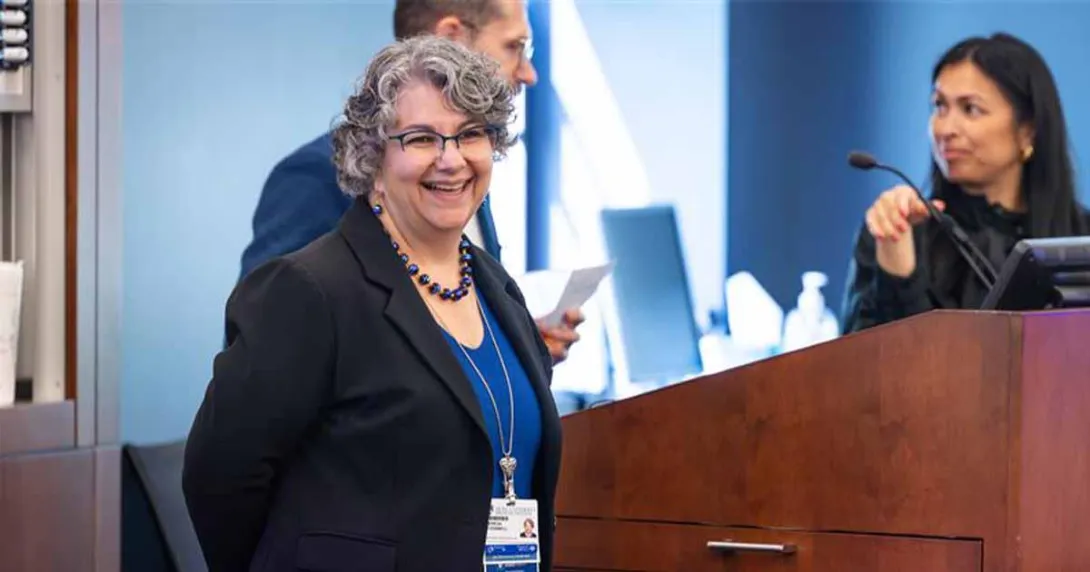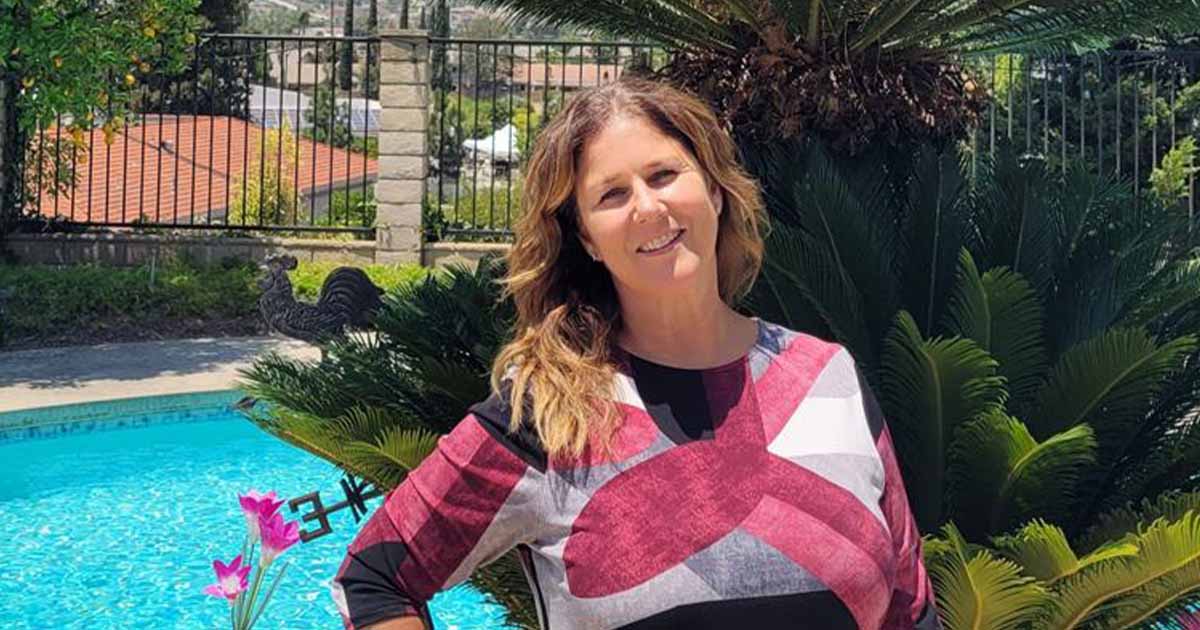
Theresa McDonnell, DNP, RN, chief nurse executive and a practicing oncology nurse at Duke University Health System
Photo: Duke University Health System
Theresa McDonnell, DNP, RN, is somewhat unusual when it comes to healthcare executives. She serves as chief nurse executive at Duke University Health System, one of the top academic health systems in the U.S. What's more, she remains a practicing oncology nurse. She brings this dual perspective – boardroom strategy meets bedside reality – to all the decisions she makes.
Most health systems across the country today are reacting to clinician burnout. But McDonnell is proactively trying to make change – spearheading innovative workforce and safety initiatives. Her team is rolling out frontline-led innovations like virtual reality-based workplace safety training and artificial intelligence-powered staffing tools that already are decreasing nurse overtime and improving retention.
She's also helping to redefine the relationship between academia and clinical practice, bridging Duke's medical school and health system in ways that could help positively impact how the next generation of nurses are trained and retained.
We spoke with McDonnell to get the inside view of her approach to nursing, burnout and automation.
Q. Please talk about your technology-enabled strategy at Duke.
A. Workplace safety is foundational to everything we do in healthcare, but how we train for it must evolve. We've taken a nurse-led approach to rethinking safety education using immersive virtual reality.
The initiative was born from our Nurse Innovation Summit, where frontline nurses identified gaps in traditional training methods, especially when preparing for real-time conflict de-escalation. The result was a VR platform that places clinicians in simulated high-stress scenarios, allowing them to build confidence and muscle memory in a safe, repeatable environment.
What makes this strategy effective isn't just the technology but the intentional design process behind it. The training reflects real-world clinical challenges because it was developed by those who experience them daily. More than 5,000 hours of practice have already been completed, and we've seen a measurable reduction in reported workplace violence incidents. This training has left our nurses feeling more prepared, supported and in control of their safety.
This VR training is part of a broader redefinition of professional development. We're shifting from compliance-based models to experiential, human-centered learning. Whether improving safety or communication, we're building capacity through effective and empowering innovation. It reinforces that our nurses are not passive participants in the system – they are catalysts for change.
Q. Another innovation you're leading is AI-powered staffing tools designed to decrease nurse overtime and improve retention. How do these tools work, and what outcomes are you seeing?
A. AI-powered staffing tools are transforming how we think about workforce planning. Not just as a logistics challenge but as a way to restore balance and equity across our teams. These tools use real-time data to forecast patient demand and recommend dynamic staffing adjustments. More importantly, they give nurses greater predictability and control in their day-to-day schedules, which directly supports retention and job satisfaction.
We didn't just plug in new software and hope for the best. From the outset, we brought nurses into the design and testing process. Their input shaped everything from interface usability to how shift preferences are captured. That collaborative approach meant we solved real problems, not just digitizing old ones.
The outcomes speak for themselves. Since rollout, we've reduced overtime by 23%, improved retention by 18%, and strengthened continuity of care by reducing the need for last-minute floating.
What's been most encouraging is seeing how these tools reinforce our broader workforce strategy. AI is enabling better insight to support decision making. For nurse leaders, it means more innovative resource planning. For staff nurses, it means a better quality of life. For patients, it means care teams that are present, rested and focused.
That's what intelligent innovation looks like when nurses help lead the charge.
Q. You told me your vision is rooted in compassion. Please talk about how that affects your work overall, your work with burnout, and your work with nurses and health IT.
A. Compassion is a strategic imperative in healthcare. My leadership philosophy is rooted in the belief that compassion fuels clarity. When we take time to understand the lived experiences of our staff, not just what they do but what it takes to do it well, we create smarter systems and stronger outcomes.
It's not about easing discomfort for comfort; it's about designing care environments where people feel seen, supported and equipped to do the work they're called to do.
When discussing burnout, we often focus on what's lacking: staffing, time, support. But I've found that trust has eroded. Trust that the system will meet clinicians halfway. We restore that trust by embedding compassion into our operations. That means listening without judgment, involving staff in shaping the tools they use, and creating workflows that respect their expertise.
Whether it's giving staff more control over their schedules or removing redundant documentation tasks, our approach is steadfast: What would it look like to lead with empathy and follow with action?
In the health IT space, compassion means ensuring technology adapts to the human, not the other way around. Our staff actively co-design tools with our teams, asking how something works and how it feels to use. A compassionate approach to innovation ensures the solutions alleviate friction.
Does it free up time for meaningful patient interaction? Does it help clinicians end their shift with energy left for their families and themselves? That lens helps us avoid overengineering and keeps our innovation efforts grounded in humanity. Ultimately, compassion is what connects technology to purpose and people to progress.
Follow Bill's HIT coverage on LinkedIn: Bill Siwicki
Email him: bsiwicki@himss.org
Healthcare IT News is a HIMSS Media publication.
WATCH NOW: How can an IT exec become a Chief AI Officer – and then work with the C-suite


